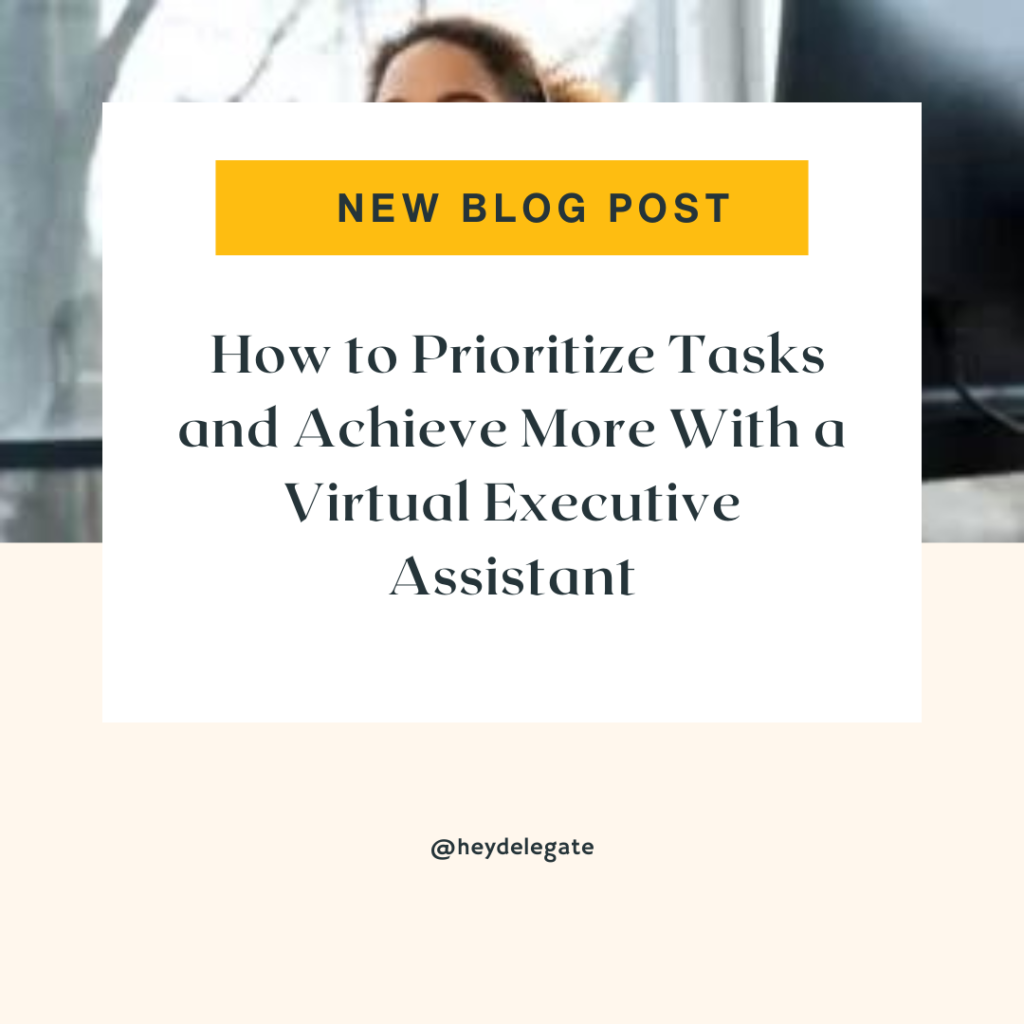As virtual executive assistants (EAs) become increasingly available, individuals and businesses can tap into top-tier talent to streamline operations and prioritize tasks, achieving more at a fraction of the cost of an in-house EA. Here, we’ll explore how to leverage a virtual EA effectively for task prioritization and increased productivity.
- Assessment and Goal Setting: Before diving into task prioritization, it’s essential to assess your current workload and set clear goals. What are your short-term and long-term objectives? What tasks are essential for achieving these goals? Communicate your priorities and expectations clearly with your virtual EA to ensure alignment.
- Identifying Urgent and Important Tasks: The Eisenhower Matrix, popularized by former U.S. President Dwight D. Eisenhower, is a valuable tool for prioritization. Tasks are categorized based on their urgency and importance and divided into four quadrants: urgent and important, important but not urgent, urgent but not important, and neither urgent nor important. Work with your virtual EA to categorize tasks accordingly, focusing on those that fall into the urgent and important quadrant first.
- Effective Communication: Communication is key when working with a virtual EA. Clearly articulate your expectations, deadlines, and preferences regarding task prioritization. Provide context for each task to help your EA understand its significance and prioritize accordingly. Regular check-ins and updates ensure that both parties are on the same page and adjustments can be made as needed.
- Utilizing Time Management Tools: Leverage technology to enhance task prioritization and time management. Collaborative platforms such as Trello, Asana, or Microsoft Teams allow you to delegate tasks, set deadlines, and track progress in real-time. Your virtual EA can assist in managing these platforms, ensuring that tasks are organized and prioritized effectively.
- Delegating with Confidence: Delegation is a skill that can significantly increase productivity. Trust your virtual EA to handle tasks efficiently and effectively. Provide clear instructions and guidelines, but also empower them to make decisions autonomously when appropriate. Delegating routine or low-priority tasks frees up your time to focus on high-impact activities.
- Flexibility and Adaptability: Priorities may shift, deadlines may change, and unexpected tasks may arise. It’s essential to remain flexible and adaptable in the face of these challenges. Regularly reassess priorities with your virtual EA, reprioritize tasks as needed, and allocate resources accordingly. Effective communication and collaboration ensure that adjustments can be made seamlessly.
- Continuous Improvement: Finally, strive for continuous improvement in task prioritization and productivity. Solicit feedback from your virtual EA on what processes are working well and where improvements can be made. Regularly evaluate your workflow, identify areas for optimization, and implement changes accordingly.
In conclusion, leveraging a virtual executive assistant can be a game-changer for maximizing productivity and achieving your goals. By effectively communicating, prioritizing tasks, utilizing time management tools, delegating with confidence, and remaining flexible, you can unlock your full potential and accomplish more than ever before. Embrace the power of collaboration and watch as your productivity soars to new heights.



